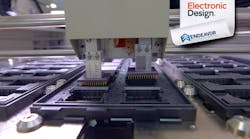This article appeared in Electronic Design and has been published here with permission.
What you’ll learn:
- How to avoid line-stops during semiconductor market shortage.
- How to source risk-free components from authorized aftermarket suppliers.
- Ways to leverage EOL licensed component manufacturing as an alternative to a line-stop or requalification.
The current semiconductor market shortages are widespread. Very few manufacturers and product families have been spared the extended lead-times, and even allocation. Though the automotive market leads the charge to secure supplies in a lean supply chain, all other market sectors are affected, or may soon be affected.
The customer is under a great deal of pressure to guarantee supply, and typically grey market or unauthorized sources are seen as the only solution. This could not be further from the truth. Authorized aftermarket suppliers, like Rochester Electronics, offer risk-free sourcing and alternative solutions to keep the customer’s lines running.
Top semiconductor manufacturers have partnered with and authorized these suppliers to manage their surplus active stocks during times of plenty. In some instances, Rochester Electronics has taken control of all material after last-time-ship. As the market moves from surplus to deficit, this authorized stock is an essential buffer to help customers avoid line-stops.
To avoid line-stops consider the following:
Instant stock of active parts
- These parts are typically older date-code, but all backed by the original manufacturers and stored to AS6496 standards.
- The product is supplied with full warranties and guarantees.
- As a 100% authorized source of supply, anti-counterfeiting standards that apply to independent suppliers such as AS6171 and AS6081, are not required.
Alternative solutions
- Discontinued stock from other historically approved suppliers
- Different temperature grades
- Different speed grades
- Different packages
- Older die iterations or build versions (e.g., plating standards, gold instead of copper bond-wire, etc.)
Reverting to a previous design or making minor design modifications (which do not trigger a full system re-qualification) can often be an alternative to a line-stop.
In addition, consider a licensed semiconductor manufacturer who can build end-of-life (EOL) product families. Licensed manufactured products are built using original known-good die; are tested using the original test processes; and are marked with the original part number.
Where customers struggle to build current products, some are restarting the production of older designs or extending the service lives of product in the field to fulfill market demands.
To learn more, check out Rochester Electronics site at www.rocelec.com.








